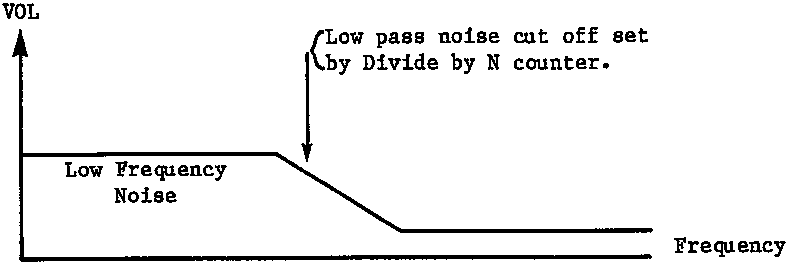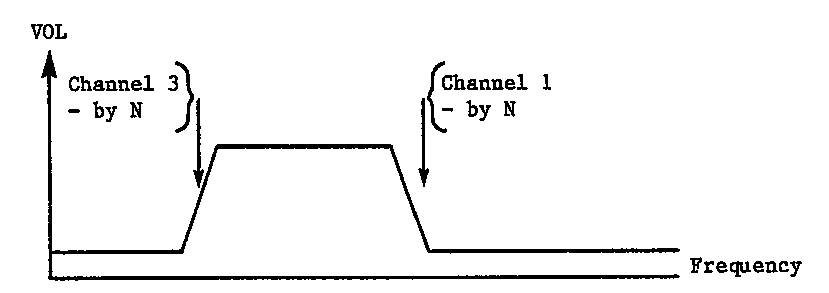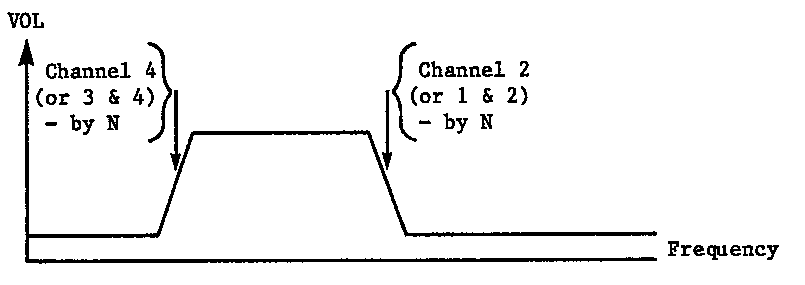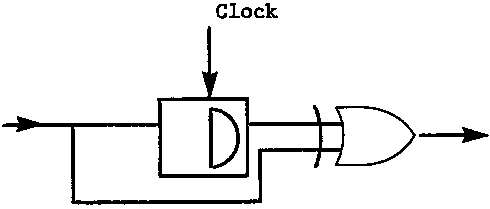



There are 4 semi-independent audio channels, each with its own frequency, noise, and volume control. Each has an 8 bit "divide by N" frequency divider, controlled by an 8 bit register (AUDFX). (See audio-serial port block diagram.) Each channel also has an 8-bit control register (AUDCX) which selects the noise (poly counter) content, and the volume.
All 4 frequency dividers can be clocked simultaneously from 64 kHz or 15 kHz. (AUDCTL bit 0). Frequency dividers 1 and 3 can alternately be clocked from 1.79 MHz (AUDCTL bits 6 and 5). Dividers 2 and 4 can alternately be clocked with the output of dividers 1 and 3 (AUDCTL bits 4 and 3). This allows the following options: 4 channels of 8 bits resolution, 2 channels of 16 bit resolution, or 1 channel of 16 bit and 2 channels of 8 bit.
There are 3 polynomial counters (17 bit, 5 bit and 4 bit) used to generate random noise. The 17 bit poly counter can be reduced to 9 bits (AUDCTL bit 7). These counters are all clocked by 1.79 MHz. Their outputs, however, can be sampled independently by the four audio channels at a rate determined by each channel’s frequency divider. Thus each channel appears to contain separate poly counters (3 types) clocked at its own frequency. This poly counter noise sampling is controlled by bits 5,6 and 7 of each AUDCX register. Because the poly counters are sampled by the "divide by N" frequency divider, the output obviously cannot change faster than the sampling rate. In these modes (poly noise outputted) the dividers are therefore acting as "low pass" filter clocks, allowing only the low frequency noise to pass.
The output of the noise control circuit described above consists of pure tones (square wave type), or polynomial counter noise at a maximum frequency set by the "divide by N" counter (low pass clock). This output can be routed through a high pass filter if desired (AUDCTL bits 1 and 2).
Any channel noise
output (without high pass filter) Low
pass noise cut off set by Divide by N counter.
|
Channel 1 output (with
high pass filter) |
Channel 2 output (with
high pass filter) |
XOR |
The high pass filter consists of a "D" flip-flop and an exclusive-OR Gate. The noise control circuit output is sampled by this flip-flop at a rate set by the "High Pass" clock. The input and output of the flip-flop pass through the exclusive-OR Gate. If the flip-flop input is changing much faster than the clock rate, the signal will pass easily through the exclusive-OR Gate. However, if it is lower than the clock rate, the flip-flop output will tend to follow the input and the two exclusive-OR Gate inputs will mostly be identical (11 or 00) giving very little output. This gives the effect of a crude high pass filter, passing noise whose minimum frequency is set by the high pass clock rate. Only channels 1 and 2 have such a high pass filter. The high pass clock for channel 1 comes from the channel 3 divider. The high pass clock for channel 2 comes from the channel 4 divider. This filter is included only if bit 1 or 2 of AUDCTL is true.
A volume control circuit is placed at the output of each channel. This is a crude 4 bit digital to analog converter that allows selection of one of 16 possible output current levels for a logic true audio input. A logic zero audio input to this volume circuit always gives an open circuit (zero current) output. The volume selection is controlled by bits 0 through 3 of AUDCX. "Volume Control only" mode can be invoked by forcing this circuit's audio input true with bit 4 of AUDCX. In this mode the dividers, noise counters, and filter circuits are all disconnected from the channel output. Only the volume control bits (0 to 8 of AUDCX) determine the channel output current.
The audio output of any channel can be completely turned off by writing zero to the volume control bits of AUDCX. All ones gives maximum volume.